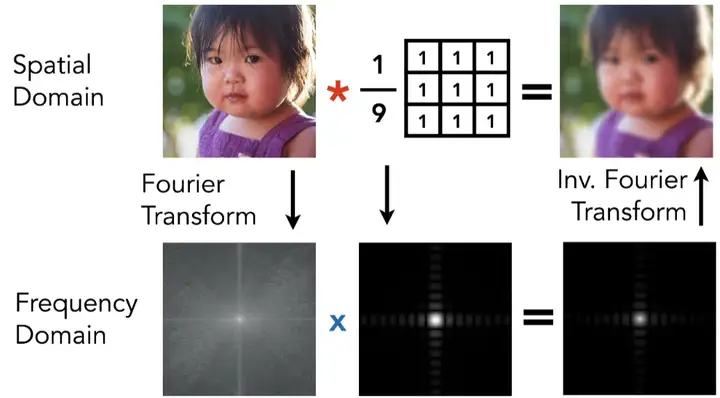9.1 KiB
title, date, excerpt, tags, rating
| title | date | excerpt | tags | rating |
|---|---|---|---|---|
| ToonPostProcess | 2024-05-15 16:50:13 | ⭐ |
FFT
Bloom
Bloom主要分
- Bloom
- FFTBloom
- LensFlares
BloomThreshold,ClampMin = "-1.0", UIMax = "8.0"。 相关逻辑位于:
if (bBloomSetupRequiredEnabled)
{
const float BloomThreshold = View.FinalPostProcessSettings.BloomThreshold;
FBloomSetupInputs SetupPassInputs;
SetupPassInputs.SceneColor = DownsampleInput;
SetupPassInputs.EyeAdaptationBuffer = EyeAdaptationBuffer;
SetupPassInputs.EyeAdaptationParameters = &EyeAdaptationParameters;
SetupPassInputs.LocalExposureParameters = &LocalExposureParameters;
SetupPassInputs.LocalExposureTexture = CVarBloomApplyLocalExposure.GetValueOnRenderThread() ? LocalExposureTexture : nullptr;
SetupPassInputs.BlurredLogLuminanceTexture = LocalExposureBlurredLogLumTexture;
SetupPassInputs.Threshold = BloomThreshold;
SetupPassInputs.ToonThreshold = View.FinalPostProcessSettings.ToonBloomThreshold;
DownsampleInput = AddBloomSetupPass(GraphBuilder, View, SetupPassInputs);
}
FFTBloom
普通Bloom算法只能做到圆形光斑,对于自定义形状的就需要使用FFTBloom。
- FFT Bloom:https://zhuanlan.zhihu.com/p/611582936
- Unity FFT Bloom:https://github.com/AKGWSB/FFTConvolutionBloom
频域与卷积定理
图像可以视为二维的信号,而一个信号可以通过 不同频率 的 Sine & Cosine 函数的线性叠加来近似得到。对于每个频率的函数,我们乘以一个常数振幅并叠加到最终的结果上,这些振幅叫做 频谱。值得注意的是所有的 F_k 都是 复数:
 此时频域上的每个振幅不再代表某个单个的时域样本,而是代表该频段的 Sine & Cosine 函数对时域信号的 整体 贡献。频域信号包含了输入图像的全部时域信息,**因此卷积定理告诉我们在时域上对信号做卷积,等同于将源图像与滤波盒图像在频域上的频谱(上图系数 V_k)做简单复数 乘法:
此时频域上的每个振幅不再代表某个单个的时域样本,而是代表该频段的 Sine & Cosine 函数对时域信号的 整体 贡献。频域信号包含了输入图像的全部时域信息,**因此卷积定理告诉我们在时域上对信号做卷积,等同于将源图像与滤波盒图像在频域上的频谱(上图系数 V_k)做简单复数 乘法:
 一一对位的乘法速度是远远快于需要循环累加的朴素卷积操作。因此接下来我们的目标就是找到一种方法,建立图像信号与其频域之间的联系。在通信领域通常使用傅里叶变换来进行信号的频、时域转换
一一对位的乘法速度是远远快于需要循环累加的朴素卷积操作。因此接下来我们的目标就是找到一种方法,建立图像信号与其频域之间的联系。在通信领域通常使用傅里叶变换来进行信号的频、时域转换
相关代码
- c++
- AddFFTBloomPass()
- FBloomFinalizeApplyConstantsCS (Bloom计算完成)
- AddTonemapPass(),PassInputs.Bloom = Bloom与PassInputs.SceneColorApplyParamaters
- AddFFTBloomPass()
-
Shader
FBloomFindKernelCenterCS:用于找到Bloom效果的核(Kernel)中心(纹理中找到最亮的像素)。用于在一个,并记录其位置。主要通过计算Luminance来获取到中心区域,而在这里的中心区域可以有多个,这也代表着在最终输出的SceneColor里可以有多个【曝点光晕(Bloom)效果】
实用代码
代码位于DeferredShadingCommon.ush:
// @param UV - UV space in the GBuffer textures (BufferSize resolution)
FGBufferData GetGBufferData(float2 UV, bool bGetNormalizedNormal = true)
{
#if GBUFFER_REFACTOR
return DecodeGBufferDataUV(UV,bGetNormalizedNormal);
#else
float4 GBufferA = Texture2DSampleLevel(SceneTexturesStruct.GBufferATexture, SceneTexturesStruct_GBufferATextureSampler, UV, 0);
float4 GBufferB = Texture2DSampleLevel(SceneTexturesStruct.GBufferBTexture, SceneTexturesStruct_GBufferBTextureSampler, UV, 0);
float4 GBufferC = Texture2DSampleLevel(SceneTexturesStruct.GBufferCTexture, SceneTexturesStruct_GBufferCTextureSampler, UV, 0);
float4 GBufferD = Texture2DSampleLevel(SceneTexturesStruct.GBufferDTexture, SceneTexturesStruct_GBufferDTextureSampler, UV, 0);
float CustomNativeDepth = Texture2DSampleLevel(SceneTexturesStruct.CustomDepthTexture, SceneTexturesStruct_CustomDepthTextureSampler, UV, 0).r;
// BufferToSceneTextureScale is necessary when translucent materials are rendered in a render target
// that has a different resolution than the scene color textures, e.g. r.SeparateTranslucencyScreenPercentage < 100.
int2 IntUV = (int2)trunc(UV * View.BufferSizeAndInvSize.xy * View.BufferToSceneTextureScale.xy);
uint CustomStencil = SceneTexturesStruct.CustomStencilTexture.Load(int3(IntUV, 0)) STENCIL_COMPONENT_SWIZZLE;
#if ALLOW_STATIC_LIGHTING
float4 GBufferE = Texture2DSampleLevel(SceneTexturesStruct.GBufferETexture, SceneTexturesStruct_GBufferETextureSampler, UV, 0);
#else
float4 GBufferE = 1;
#endif
float4 GBufferF = Texture2DSampleLevel(SceneTexturesStruct.GBufferFTexture, SceneTexturesStruct_GBufferFTextureSampler, UV, 0);
#if WRITES_VELOCITY_TO_GBUFFER
float4 GBufferVelocity = Texture2DSampleLevel(SceneTexturesStruct.GBufferVelocityTexture, SceneTexturesStruct_GBufferVelocityTextureSampler, UV, 0);
#else
float4 GBufferVelocity = 0;
#endif
float SceneDepth = CalcSceneDepth(UV);
return DecodeGBufferData(GBufferA, GBufferB, GBufferC, GBufferD, GBufferE, GBufferF, GBufferVelocity, CustomNativeDepth, CustomStencil, SceneDepth, bGetNormalizedNormal, CheckerFromSceneColorUV(UV));
#endif
}
// Minimal path for just the lighting model, used to branch around unlit pixels (skybox)
uint GetShadingModelId(float2 UV)
{
return DecodeShadingModelId(Texture2DSampleLevel(SceneTexturesStruct.GBufferBTexture, SceneTexturesStruct_GBufferBTextureSampler, UV, 0).a);
}
ShadingModel判断
bool IsToonShadingModel(float2 UV)
{
uint ShadingModel = DecodeShadingModelId(Texture2DSampleLevel(SceneTexturesStruct.GBufferBTexture, SceneTexturesStruct_GBufferBTextureSampler, UV, 0).a);
return ShadingModel == SHADINGMODELID_TOONSTANDARD
|| ShadingModel == SHADINGMODELID_PREINTEGRATED_SKIN;
}
PS.需要Shader添加FSceneTextureShaderParameters/FSceneTextureUniformParameters。
IMPLEMENT_STATIC_UNIFORM_BUFFER_STRUCT(FSceneTextureUniformParameters, "SceneTexturesStruct", SceneTextures);
BEGIN_SHADER_PARAMETER_STRUCT(FSceneTextureShaderParameters, ENGINE_API)
SHADER_PARAMETER_RDG_UNIFORM_BUFFER(FSceneTextureUniformParameters, SceneTextures)
SHADER_PARAMETER_RDG_UNIFORM_BUFFER(FMobileSceneTextureUniformParameters, MobileSceneTextures)
END_SHADER_PARAMETER_STRUCT()
ToneMapping
- UE4/UE5和ACES工作流程:https://zhuanlan.zhihu.com/p/660965710
ToneMapping种类
- ShaderToy效果演示: https://www.shadertoy.com/view/McG3WW
- ACES
- Narkowicz 2015, "ACES Filmic Tone Mapping Curve"
- https://knarkowicz.wordpress.com/2016/01/06/aces-filmic-tone-mapping-curve/
- PBR Neutral https://modelviewer.dev/examples/tone-mapping
- Uncharted tonemapping
- AgX
- ACES
UE中的相关实现
UE4版本的笔记:UE4 ToneMapping
TonemapCommon.ush中的FilmToneMap()在CombineLUTsCommon()中调用。其顺序为:
- AddCombineLUTPass() => PostProcessCombineLUTs.usf
- AddTonemapPass() => PostProcessTonemap.usf
void AddPostProcessingPasses()
{
...
{
FRDGTextureRef ColorGradingTexture = nullptr;
if (bPrimaryView)
{
ColorGradingTexture = AddCombineLUTPass(GraphBuilder, View);
}
// We can re-use the color grading texture from the primary view.
else if (View.GetTonemappingLUT())
{
ColorGradingTexture = TryRegisterExternalTexture(GraphBuilder, View.GetTonemappingLUT());
}
else
{
const FViewInfo* PrimaryView = static_cast<const FViewInfo*>(View.Family->Views[0]);
ColorGradingTexture = TryRegisterExternalTexture(GraphBuilder, PrimaryView->GetTonemappingLUT());
}
FTonemapInputs PassInputs;
PassSequence.AcceptOverrideIfLastPass(EPass::Tonemap, PassInputs.OverrideOutput);
PassInputs.SceneColor = SceneColorSlice;
PassInputs.Bloom = Bloom;
PassInputs.SceneColorApplyParamaters = SceneColorApplyParameters;
PassInputs.LocalExposureTexture = LocalExposureTexture;
PassInputs.BlurredLogLuminanceTexture = LocalExposureBlurredLogLumTexture;
PassInputs.LocalExposureParameters = &LocalExposureParameters;
PassInputs.EyeAdaptationParameters = &EyeAdaptationParameters;
PassInputs.EyeAdaptationBuffer = EyeAdaptationBuffer;
PassInputs.ColorGradingTexture = ColorGradingTexture;
PassInputs.bWriteAlphaChannel = AntiAliasingMethod == AAM_FXAA || bProcessSceneColorAlpha;
PassInputs.bOutputInHDR = bTonemapOutputInHDR;
SceneColor = AddTonemapPass(GraphBuilder, View, PassInputs);
}
...
}
PostProcessCombineLUTs.usf
相关变量更新函数位于FCachedLUTSettings::GetCombineLUTParameters()
PostProcessTonemap.usf
实现方法
//BlueRose Modify
FGBufferData SamplerBuffer = GetGBufferData(UV * View.ResolutionFractionAndInv.x, false);
if (SamplerBuffer.CustomStencil > 1.0f && abs(SamplerBuffer.CustomDepth - SamplerBuffer.Depth) < 1)
{
// OutColor = SampleSceneColor(UV);
OutColor = TonemapCommonPS(UV, InVignette, GrainUV, ScreenPos, FullViewUV, SvPosition, Luminance);
}else
{
OutColor = TonemapCommonPS(UV, InVignette, GrainUV, ScreenPos, FullViewUV, SvPosition, Luminance);
}
//BlueRose Modify End